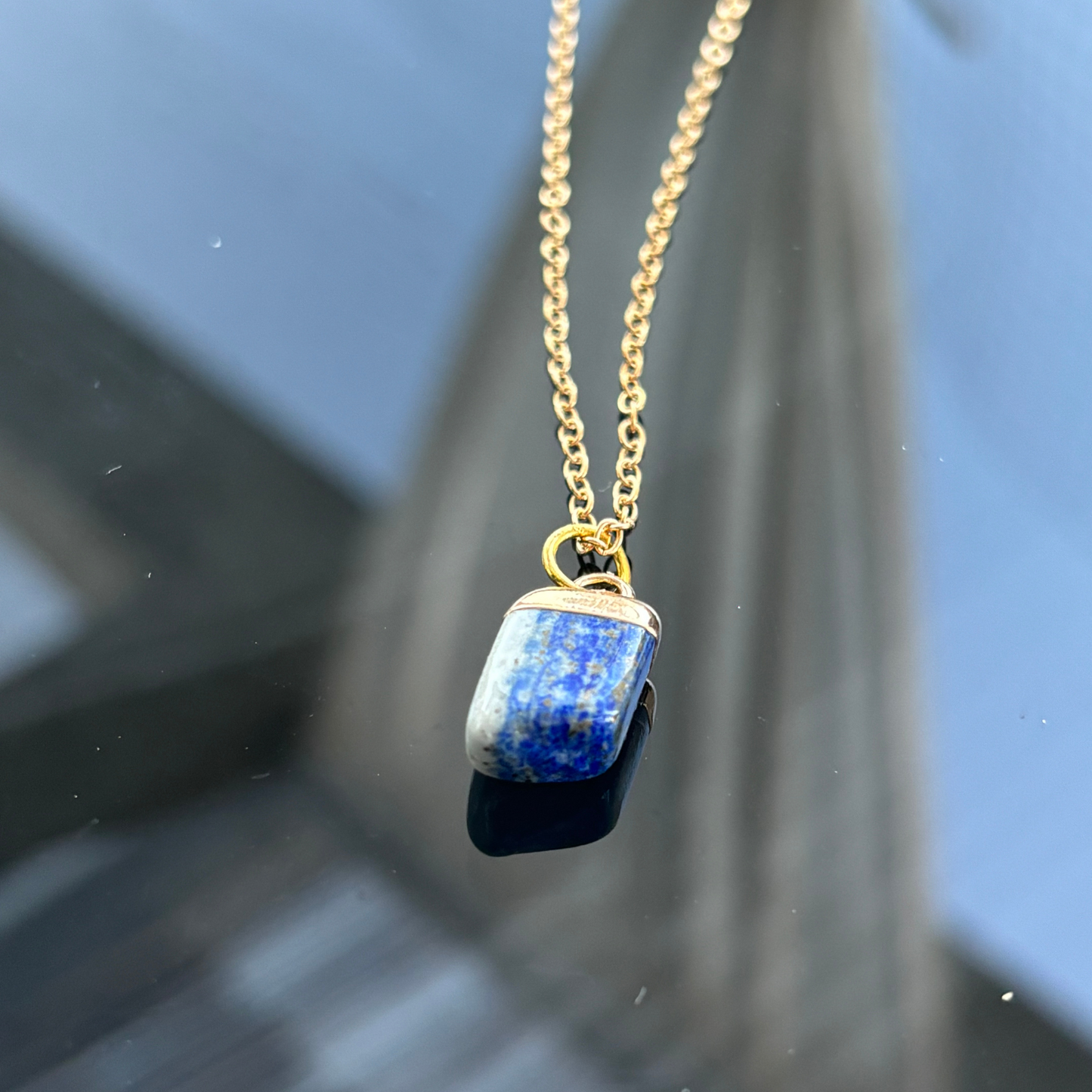Aquelia Design
Колие със суров Лапис Лазули
Колие със суров Лапис Лазули
Редовна цена
€51,00 EUR
Редовна цена
€62,00 EUR
Продажна цена
€51,00 EUR
Единична цена
/
по
С включени данъци.
Доставката се изчислява при плащане.
Наличността за получаване на място не можа да се зареди
Физически свойства
- Химическа формула : (Na,Ca)₈(AlSiO₄)₆(SO₄,S,Cl)₂, основно съставен от лазурит, с калцит, пирит и други минерали
- Цвят : Наситено син, често със златни петна от пирит и бели калцитни жилки
- Кристална система : Изометрична
- Твърдост : 5 - 5,5 по скалата на Моос
- Специфично тегло : 2.7 - 2.9
- Прозрачност : Непрозрачен
- Блясък : Мътен до стъкловиден
- Ивица : Светло синьо
Оптични свойства
- Индекс на пречупване : Приблизително 1,50
- Двойно пречупване : Няма (изотропно)
- Плеохроизъм : Няма
- Флуоресценция : Обикновено няма, въпреки че някои проби могат да флуоресцират под ултравиолетова светлина поради калцитни включвания
Лечебни и метафизични свойства
- Енергия : Лапис лазули се смята за камък на мъдростта, истината и самосъзнанието. Стимулира интелектуалните способности и подобрява комуникацията.
- Чакри : Основно свързани с чакрата на гърлото и чакрата на третото око
- Емоционално изцеление : Носи дълбок мир и подобрява себеизразяването и креативността. Също така облекчава стреса и насърчава хармонията в отношенията.
- Физическо лечение : Използва се в практики за лечение с кристали за подпомагане на дихателната и нервната система, гърлото, гласните струни и имунната система. Също така помага за облекчаване на болката и възпалението.
Употреби
- Бижута : Популярни в пръстени, колиета, обеци и гривни поради поразителния си цвят и историческо значение. Често изрязани като кабошони или мъниста.
- Декоративен : Широко използван в дърворезби, инкрустация, мозайки и декоративни предмети.
- Исторически : Исторически използван за създаване на ултрамарин пигмент за рисуване и като ценен материал в древни артефакти и бижута.
Грижа
- Почистване : Трябва да се почиства с топла сапунена вода и мека четка. Избягвайте агресивни химикали, ултразвукови почистващи препарати и продължително излагане на силна слънчева светлина, което може да увреди камъка.
- Издръжливост : Лапис лазули е относително мек и може лесно да се надраска. Трябва да се съхранява отделно от по-твърдите скъпоценни камъни, за да се предотврати повреда.
Източници
- Основни източници : Lapis lazuli се намира предимно в Афганистан, със значителни находища също в Чили, Русия, Мианмар, Пакистан и Съединените щати.
Съвети за идентификация
- Цвят и включвания : Наситеният син цвят на лапис лазули, често със златни петна от пирит и бели калцитни жилки, може да помогне при идентифицирането му. Въпреки това, той може да бъде объркан с други сини камъни като содалит или азурит.
- Тестване : Гемологичните тестове могат да помогнат за разграничаването на лапис лазули от подобни на вид минерали чрез неговата специфична гравитация, индекс на пречупване и наличието на включвания на пирит и калцит.
Богатата история, живият цвят и метафизичните свойства на лапис лазули го правят ценен скъпоценен камък сред колекционери и ентусиасти на бижута. Разнообразните му приложения в декоративни и исторически контексти подчертават неговата трайна привлекателност и значение.
Сподели


